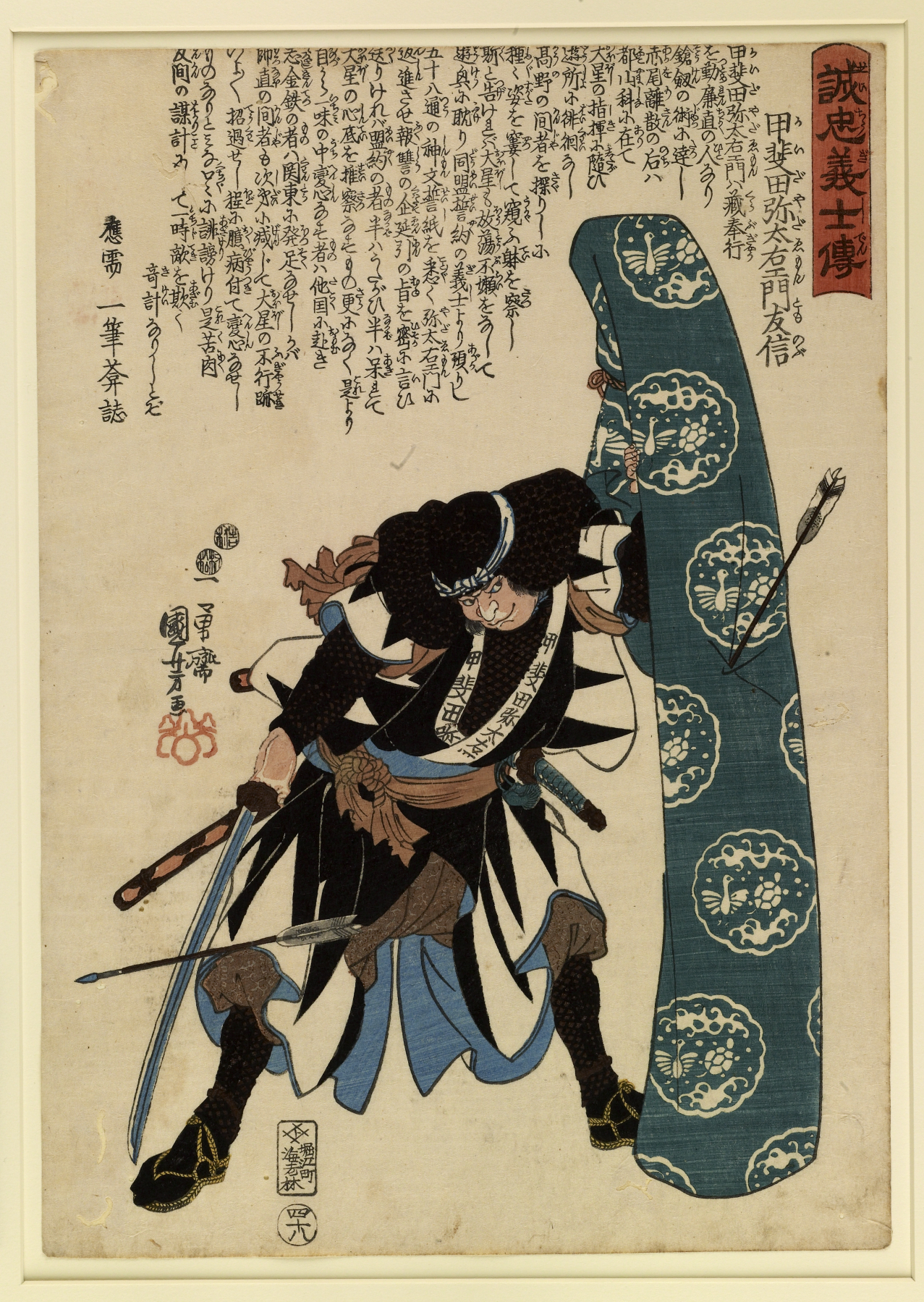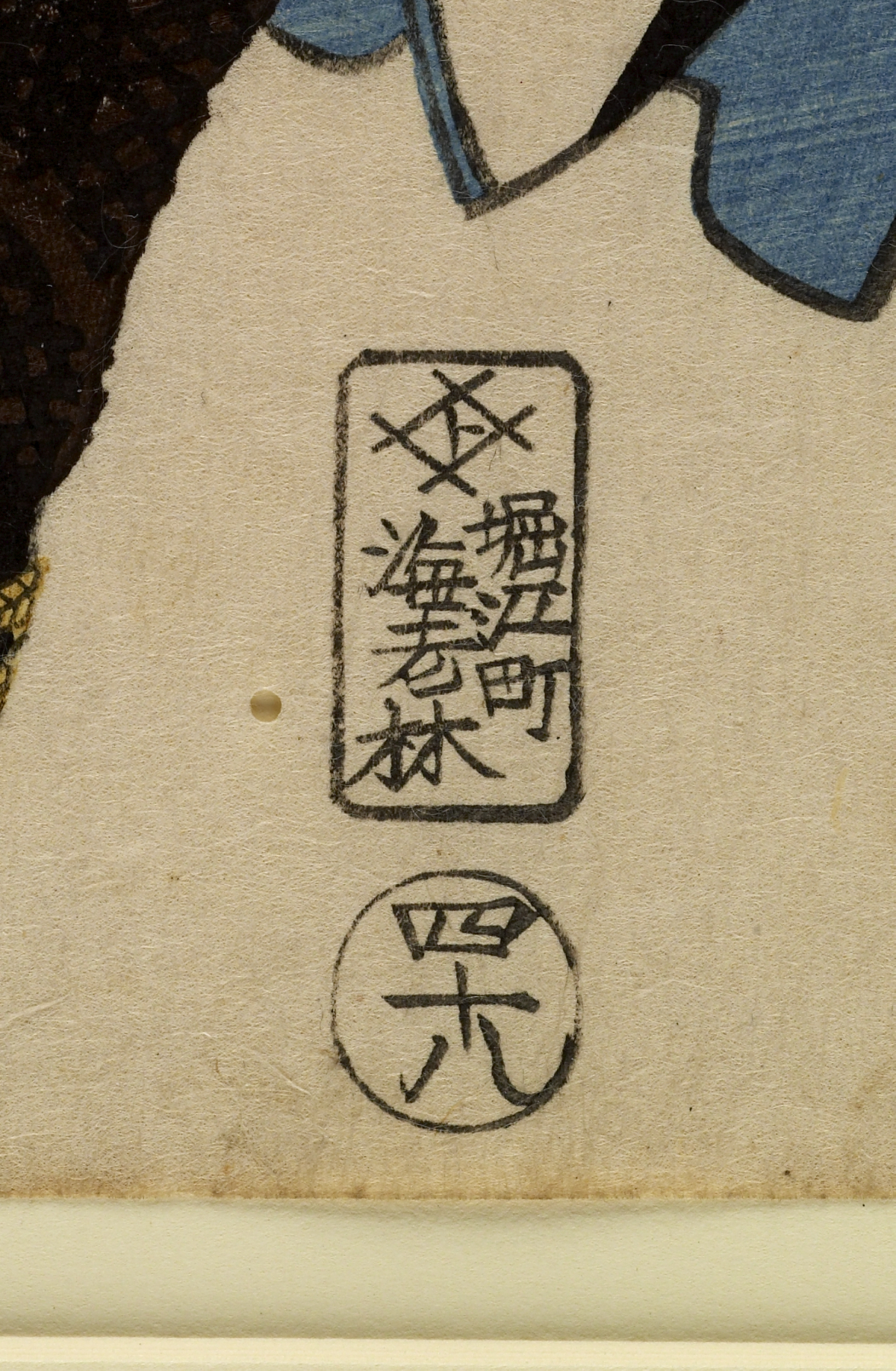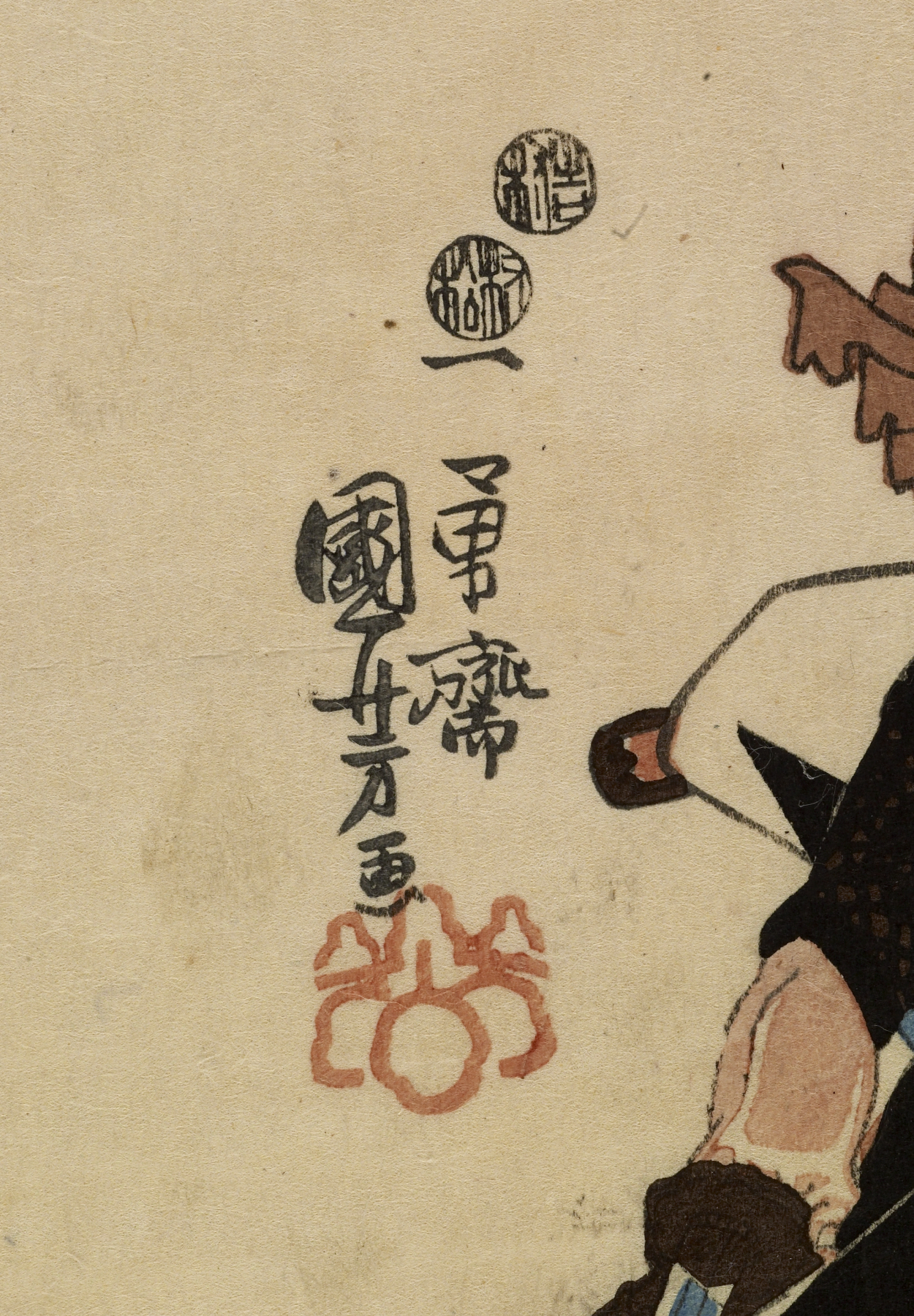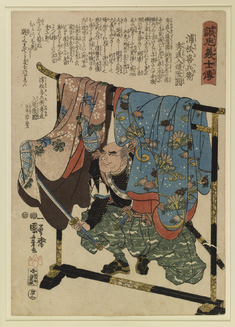Seichu gishi den
(Japan and Korea )
The tale of the forty-seven loyal warriors is based on events that took place in Japan in the years 1701-03. The warriors vowed to avenge the death of their master Lord Enya Hangan, who had been ordered to commit suicide as punishment for drawing his sword and attacking a high official in the palace. This official, who had in fact provoked Hangan, was the evil Moronao. Following two years of planning, the warriors (actually "ronin," former samurai who have lost their master) finally killed Moronao in his home. A year later they too were ordered to perform ritual suicide.
A dramatization of the actual events appeared on the Kabuki stage almost immediately. The best-known play, Chushingura, was written for the puppet theater in 1748.
Inscription
Provenance
Provenance (from the French provenir, 'to come from/forth') is the chronology of the ownership, custody, or location of a historical object. Learn more about provenance at the Walters.
Mr. and Mrs. C. R. Snell, Jr. [date and mode of acquisition unknown]; Walters Art Museum, 1986, by gift.
Exhibitions
| 1989 | The Nature of Loyalty: Japanese Warrior Prints of the Nineteenth Century. The Walters Art Gallery, Baltimore. |
Geographies
Japan, Tokyo (Edo) (Place of Origin)
Measurements
H: 14 1/4 x W: 10 1/16 in. (36.2 x 25.5 cm)
Credit Line
Gift of Mr. and Mrs. C. R. Snell, Jr., 1986
Location in Museum
Not on view
Accession Number
In libraries, galleries, museums, and archives, an accession number is a unique identifier assigned to each object in the collection.
In libraries, galleries, museums, and archives, an accession number is a unique identifier assigned to each object in the collection.
95.52









